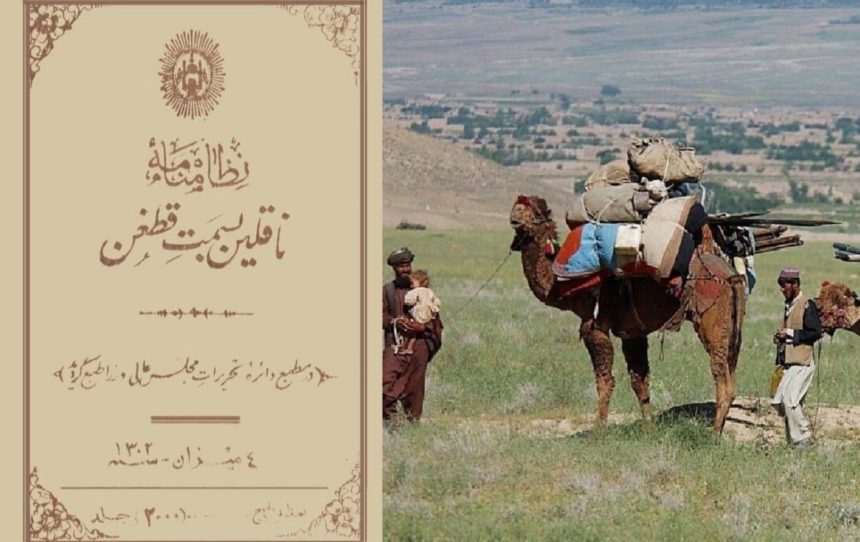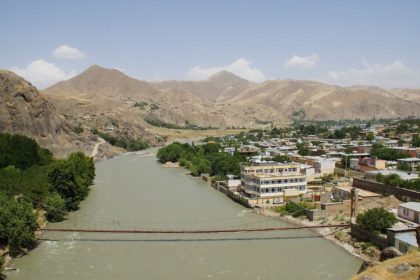RASC News Agency: (Nizam Nama) of Qataghan or internal colonization “Pashtun colonization” is a deliberate program of the Pashtun tribe during which the Pashtun tribes were transferred to the northern part of the country. By the following the model of the world’s colonial powers, which in occupied territories including in North and South America, which resulted in the loss of identity of the original redskins. In addition, after the occupation of large areas in the eastern part of the country by the Sikandar Maqdoni, in order to preserve his sovereignty, he began internal colonization by transferring the citizens that he wanted.
As early as the tenth century AD, the Afghans or Pashtuns were a small tribe living in the Suliman Mountains, and as the population grew, their area of settlement gradually spread to other parts of the country.
Afghans influence in the political geography of the region dates back to the early 18th century, with the Ghalijai tribe conquering Fars and the emergence of Ahmad Shah Durrani.
After years of tribal rule, the established government of Ahmed Shah was overthrown and independent local governments were established in the north of Hindu Kush, in Badakhshan, Qataghan, Balkh, and in the south, in Kabul, Kandahar, and Herat, and the British at the time took advantage of this. They asked his appointed king “Abdul Rahman” from Russia, and appointed him as the king in Kabul. Not even Kandahar or Herat was under his rule. The north of Hindu Kush remained independent.
As a tribal king with the backing of Britain, Abdul Rahman crushed all local rulers and power with the sword of the British and established national sovereignty in the country. Then, Britain and Russia, both under the rule of this tribal autocrat, closed the borders and drew a line and recognized Abdul Rahman as the King of “Afghanistan”. The King of the tribe, who was a slave of Britain in external matters and a free man in internal matters, took advantage of this opportunity to torture non-Pashtun tribes in all sorts of ways and made the heads of non-Pashtun people into minarets.
Before the reign of Abdul Rahman, Afghanistan did not exist in the history of this region and with these boundaries in the geo-political geography of the world. All the rulers of the region, even in the treaties with foreign countries, were referred to as the rulers of the regions or provinces. For example, in the treaty between Britain and Shah Shuja named as the king of Kabul, they signed a treaty as the ruler of Herat with Kamran as king of Herat, and as ruler of Kabul with Dost Muhammad.
Following the establishment of Afghanistan by Abdul Rahman, and the delineation of British boundaries, Mahmoud Tarzi proposed the concept of ethnic, linguistic and tribal supremacy during Habibullah “son of Abdul Rahman”. In addition, his fascist plan during the reign of Amanullah (Abdul Rahman’s grandson) through the issuance of a constitutional decree (Nizam Nama), “Pashtuns” towards Qataghan. As well as during the reign of Nader Shah with the establishment of the “Kabul Literary Association” and Zahir Shah with the creation of (Pashto Toolana) and the practice of “nationalizing” the Pashtu “language” in competition with the Persian “culture” and in an unprecedented manner. The primary goal of this group was “Afghanism” and “Pashtunism”, the history, identity, and culture of all citizens, all named Afghans and the “country named Afghanistan”. At the same time, (Poota Khazana) hidden treasures and Malalis were created and the historical names of the country were changed to Pashtu language names.
18th century onward, the main political and economic players in Afghanistan have been the descendants of Ahmed Shah and the Pashtun headed, who fought among themselves for the rule of Afghanistan in the cities of Kabul, Kandahar, and Herat. To gain power, they invoke the old rulers such as Britain and Russia.
While other ethnic groups of the country, including Tajiks, Hazaras, Uzbeks, etc., have been in their footsteps, except for limited cases such as Amir Habibullah Khan Kalakani, Burhanuddin Rabbani and Ahmad Shah Masoud, the national hero of Afghanistan, have not claimed ownership, power, leadership and sovereignty.
Political experts predict that until authentic Afghanistan tribes, such as the Tajiks, are able to assert ownership, leadership, and sovereignty over their homeland, they will “fall on the Pashtun feet” and face off against one another in the army. Pashtun tribal rulers will dominate the country and capture other ethnic groups, such as the Taliban.
Pashtun settlements in the north of Turkestan included soldiers and government officials, as well as a few families and tribes that were sent there for political reasons. However, during the time of the emirate of Abdul Rahman, the practice of voluntary Pashtun migration to the north began with the setting of monetary incentives. The incentives offered to the Pashtun tribal leaders were land, travel, animals, and three years tax exemption for the tribes that voluntarily migrated to the north. The 500 families reached the 40,000 family level after which Abdul Rahman prohibited the return of the Pashtun to the south from the north and prohibited the return to the south Pashtuns to the southern provinces.
Under the rule of Amanullah, the transfer of Pashtun tribes into Turkestan or Northern Afghanistan became legal with the adoption of the law of (Nizam Nama), which established and paid land, travel costs and necessary amenities to Pashtun tribes who were admitted to settle in Qataghan in 1301.
According to the document, certain authorities and representatives of the Qataghan government were required to allow the transport to enter the north.
Under this system, south and eastern Pashtuns were encouraged to hurry to Qataghan, the old capital of northern Afghanistan, and those who showed interest were rewarded with fertile land in important tax-free areas.
Article 7 of the law states that for every family member aged seven years and above, eight acres land will be allotted to each family member from the land reserved for the Pashtun in the government areas.
The Taliban has now reinstituted the process of making Northern Afghanistan Pashtun based on the (Nizam Nama) of Amanullah, and this group has begun the process of moving Pashtuns out of Waziristan into the Northern provinces for the first time in almost a hundred years after the reign of Amanullah. According to the reports released so far, forty thousand Pashtuns in Waziristan have been moved to northern Afghanistan, and land has been given to them.
Sayeed Anwar Sadat, who served as the National Security Council under the former government of Afghanistan, recently said that the activities of the Taliban in the north of the country have concerned the people of this area about the revival and execution of the (Nizam Nama) of Qataghan. Amanullah wrote the (Nizam Nama) of Qataghan in 1301.
According to Mr. Sadat, the Taliban plan to resettle 3 million Pakistani Pashtuns in the 285 km (Qosh Tapa) canal area and other parts of northern Afghanistan.






